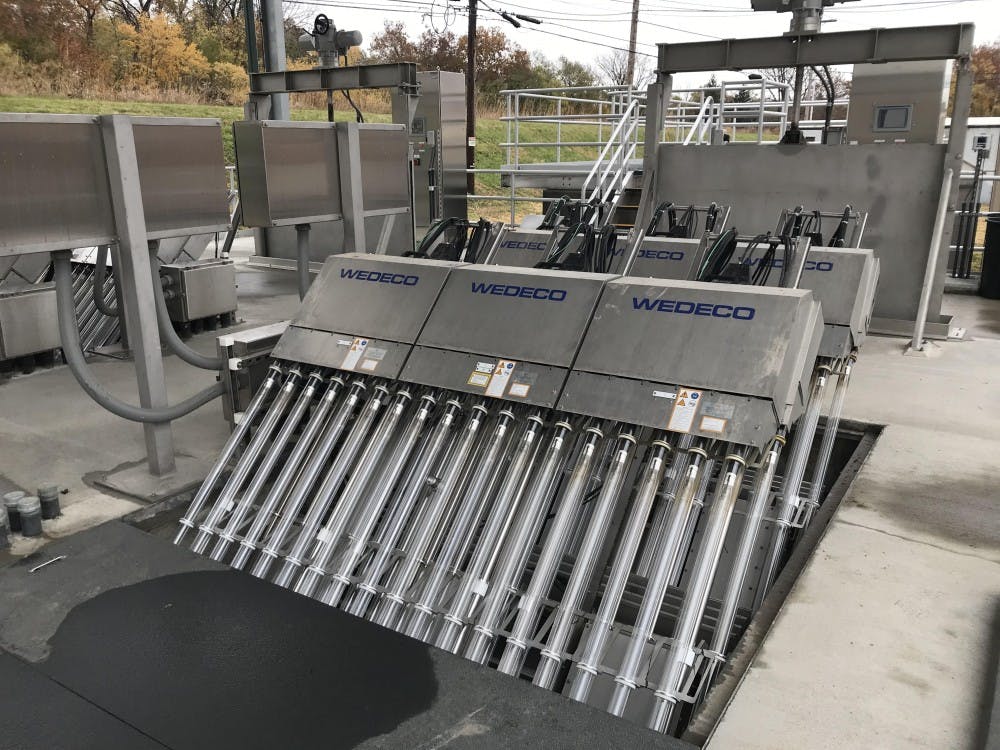Disinfection season at the Muncie Wastewater Treatment Plant ended Nov. 1. This was its first season using ultraviolet (U.V.) lights to treat water instead of chemicals.
The U.V. bulbs are submerged in the water during disinfection season, and water passes through them before entering the White River.
The Muncie Sanitary District Board funded this improvement to make the plant and the surrounding area safer.
While this technology isn’t new, it is new for the plant.
“We're not the first wastewater plant to use U.V. But we're able to go ahead and modernize, improve it and this has been a great thing for us,” said John Barlow, superintendent of Water Pollution Control Facility.
Before April 1, when disinfection season began, the plant used chlorine gas to treat the sewage water before it entered the White River. They would have as much as 20 tons of chemicals on the site at one time.
Along with chlorine gas, sodium hydroxide was used to get rid of E. coli, but now the U.V. lights render the E. coli inactive so it can’t reproduce.
"So you get the same result,” Barlow said. “You don't get E. coli going out to the river.”
The new system is healthier and safer for workers. Operations Manager Jason Ingram feels much better using the U.V. system. He handled the chlorine gas for nearly 15 years.
When the one-ton cylinders full of compressed chlorine are empty, they have to be changed out.
Ingram said there’s a risk every time a cylinder is hooked and unhooked.
"When one doesn't connect right, you'll get a little hit of that and everybody who's really ever dealt with this has had a little taste. Let's just put it that way,” Ingram said.
Ingram said this issue was not uncommon.
“It's like a bad cough and you're continuously doing it and you're just trying to clear your lungs and it'll continue through the day depending on how much dosage you got," Ingram said.
The U.V. lights at the plant aren't required by the Indiana Department of Environmental Management (IDEM), however, Barlow said IDEM is always looking to see improvements and it will also be easier to meet state requirements.
"Even though we've been very careful and very fortunate that we've not had any kind of issues,” Barlow said. “Removing the chemical off-site just does away with that risk.”
Contact Mary Eber with comments at mmeber@bsu.edu.





